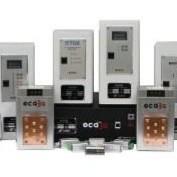
Lightning protection protects a building by providing a safe path for lightning to follow, reducing the risk of damage or fire. A lightning protection system typically includes:
1. Air terminals (lightning rods): Attract lightning and direct it to the down conductor.
2. Down conductors: Carry the lightning current from the air terminal to the ground electrode.
3. Ground electrodes: Dissipate the lightning current harmlessly into the earth.
4. Surge protectors: Protect electrical systems and appliances from power surges.
5. Bonding: Connect metal parts to prevent side flashes and ensure a safe path to ground.
This system:
1. Reduces the risk of fire and explosion.
2. Protects electrical systems and appliances from damage.
3. Minimizes structural damage to the building.
4. Ensures continuity of critical operations.
5. Safeguards people and assets within the building.
It's important to note that lightning protection systems should be installed and maintained in accordance with local standards and regulations, such as the National Electric Code (NEC) or the International Electrotechnical Commission (IEC) standards.
Keywords
NEC
fire
risk
earth
assets
people
Bonding
building
safe path
explosion
continuity
conductors
accordance
appliances
metal parts
regulations
power surges
side flashes
Air terminals
IEC) standards
down conductor
lightning rods
local standards
ground electrode
Surge protectors
lightning current
structural damage
electrical systems
critical operations
National Electric Code
lightning protection systems
International Electrotechnical Commission




